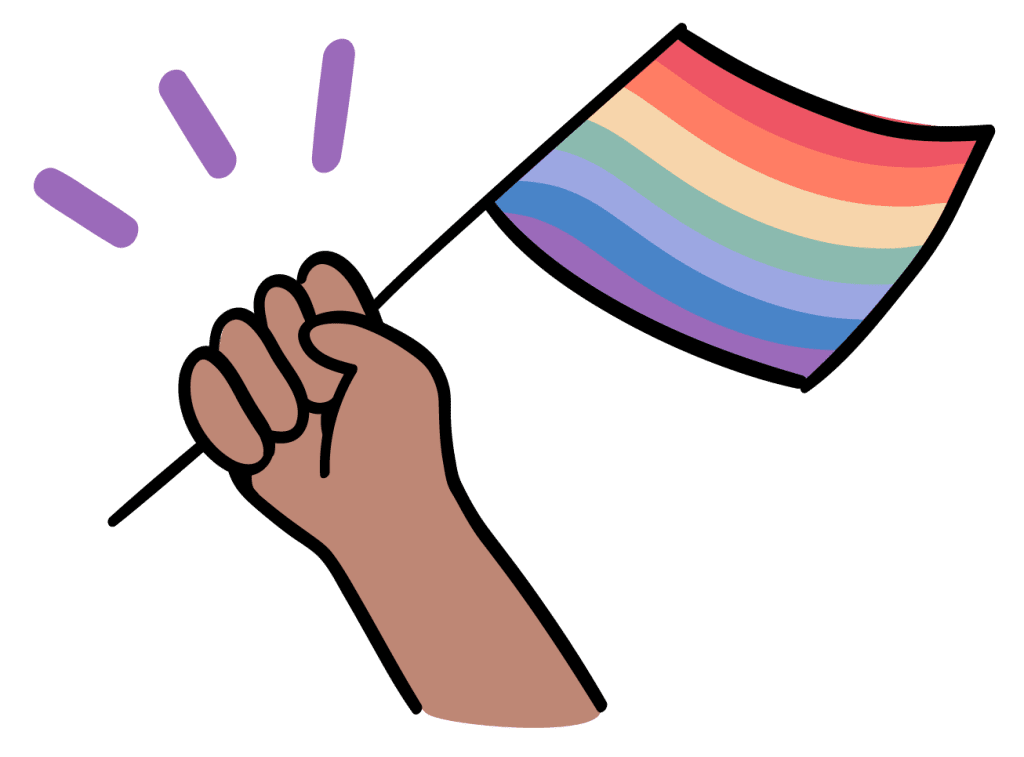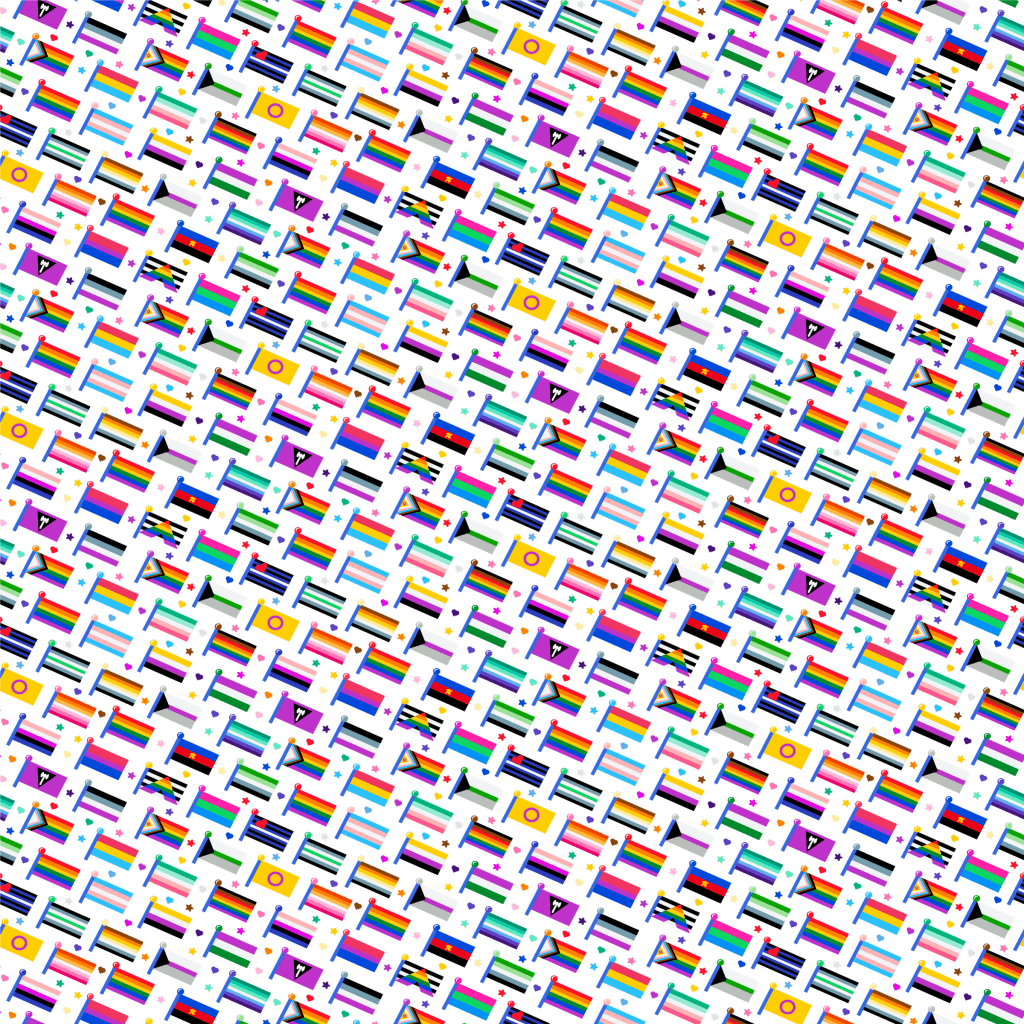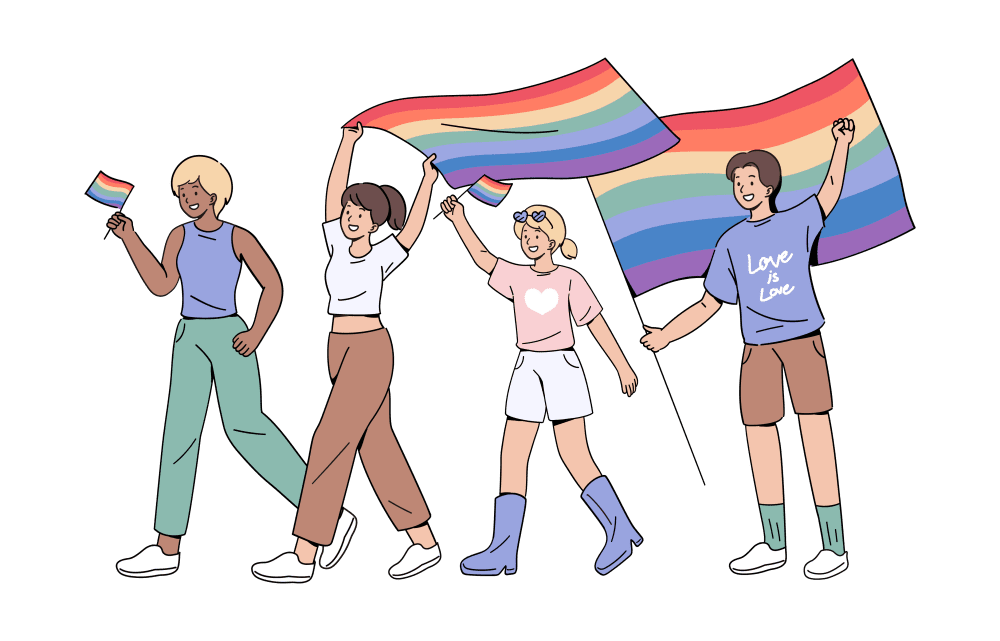Welcome to the Queer Dictionary, a comprehensive guide to understanding the diverse and vibrant world of LGBTQI+ identities, orientations, and expressions. In this guide, we explore the rich tapestry of sexualities, gender identities, romantic orientations, and pronouns that make up the LGBTQI+ spectrum. By delving into this Queer Dictionary, we aim to promote understanding, respect, and acceptance for all individuals, regardless of their sexual orientation or gender identity. If you are looking for mental health information about queer people, take a look and read this article as well.
Queer Dictionary Topic 1: Queer Theory
Before delving deeper into the diverse terminologies of the LGBTQI+ community, it’s essential to understand the academic framework that underpins much of our understanding of these identities – Queer Theory. Queer Theory is a field of critical theory that emerged in the late 20th century, primarily focusing on issues related to sexuality, gender identity, and the social construction of these concepts. It challenges traditional notions of gender and sexuality, aiming to deconstruct and destabilize the existing norms and categories.

The Origins of Queer Theory:
Queer Theory finds its roots in feminist and gay/lesbian studies, evolving as an interdisciplinary approach to understanding the complexity of human identity and desire. Emerging in the 1980s and 1990s, Queer Theory was a response to the limitations of earlier LGBTQ+ studies, which often focused on assimilation into existing societal structures. Queer theorists sought to explore the fluidity and diversity of sexual and gender identities, embracing the ‘queerness’ of human experiences that do not conform to normative expectations.
Contributions to LGBTQI+ Terminology:
Queer Theory has significantly influenced the language and terminology used within the LGBTQI+ community. By challenging rigid definitions and celebrating the complexity of identities, Queer Theory has allowed for the emergence and acceptance of diverse sexual orientations, gender identities, and expressions. It encouraged the adoption of the term ‘queer’ itself, transforming a once derogatory term into a proud self-identification for many within the LGBTQI+ community.
The Evolution of Language:
As Queer Theory gained prominence, it facilitated a nuanced understanding of the social, political, and cultural aspects of LGBTQI+ identities. This evolution in thinking led to the creation of new terms and the reinterpretation of existing ones, allowing individuals to express their identities and experiences in more authentic and accurate ways. Words like ‘non-binary,’ ‘genderqueer,’ ‘cisgender,’ and ‘pansexual’ have become more widely recognized and accepted, enriching our vocabulary and promoting inclusivity.

Postmodernism and Queer Theory:
Postmodernism, a philosophical and cultural movement, challenges grand narratives and fixed meanings. In the context of Queer Theory, it questions established norms related to sexuality and gender, emphasizing the fluidity and plurality of identities. Postmodernism’s skepticism towards fixed categories aligns with Queer Theory’s goal to deconstruct rigid sexual and gender binaries, enabling individuals to embrace diverse identities outside conventional constraints.
Feminism and Queer Theory:
Feminism, advocating for gender equality and challenging patriarchal structures, shares common ground with Queer Theory in questioning normative gender roles. Both movements strive to dismantle oppressive frameworks, empowering individuals to express their identities freely. Queer Theory acknowledges the intersections of gender and sexuality, amplifying the voices of LGBTQI+ individuals, including those within feminist movements, whose experiences have historically been marginalized.
Queer Theory’s Vision for Societal Transformation:
- Challenging Heteronormativity: Queer Theory challenges the assumption that heterosexuality is the norm, fostering acceptance of diverse sexual orientations and relationships.
- Destabilizing Gender Norms: By deconstructing traditional gender norms, Queer Theory encourages the acceptance of non-binary and genderqueer identities, promoting a more inclusive understanding of gender.
- Promoting Intersectionality: Queer Theory, in alignment with feminism, emphasizes the importance of intersectionality, recognizing that individuals’ experiences are shaped by various factors such as race, class, and ability.
- Affirming Diverse Identities: Queer Theory celebrates diverse sexual and gender identities, encouraging self-expression and fostering a sense of belonging for LGBTQI+ individuals.
- Critiquing Power Structures: Queer Theory critiques power structures, including those within the LGBTQI+ community, encouraging inclusivity and challenging hierarchies based on gender, race, and other factors.

Influential figures and ideas
Queer Theory, a revolutionary field of study, challenges societal norms surrounding gender, sexuality, and identity. The thoughts and ideas of influential thinkers within Queer Theory have shaped not only academic discourse but also societal attitudes. Let’s explore the key figures and their transformative contributions to this essential field.
Michel Foucault
A foundational figure in Queer Theory, Foucault’s work laid the groundwork for understanding the relationship between power, knowledge, and sexuality. His exploration of historical and societal attitudes towards sexuality, documented in works like “The History of Sexuality,” illuminated the ways in which sexual norms are socially constructed and regulated.
Judith Butler
Butler’s concept of performativity revolutionized gender studies. In her groundbreaking work “Gender Trouble,” she argued that gender is not inherent but performed, challenging the binary view of gender. Butler’s ideas profoundly influenced Queer Theory, emphasizing the fluidity and complexity of gender identities.
Eve Kosofsky Sedgwick
Sedgwick’s work, especially her book “Epistemology of the Closet,” explored the hidden histories of homosexuality and the concept of the closet. She examined how cultural and literary texts shape our understanding of sexual identities, unveiling the ways in which identities are both concealed and revealed.
Gayle Rubin
Rubin’s influential essay “Thinking Sex” explored the social construction of sexuality and the hierarchies imposed on sexual practices. She emphasized the importance of sexual freedom and critiqued the societal stigmatization of diverse sexual practices, advocating for sexual liberation and acceptance.
Monique Wittig
Wittig’s work challenged the social construct of gender itself. In her essay “The Straight Mind,” she argued that the concept of ‘woman’ is a political and social construction, not a biological reality. Wittig’s writings encouraged a profound reevaluation of gender and its implications for identity.
Audre Lorde
Lorde’s intersectional approach to feminism and queer identity emphasized the importance of embracing one’s unique experiences. Her writing, particularly in works like “Zami: A New Spelling of My Name,” highlighted the significance of race, class, and sexuality in shaping individual identities, offering valuable insights into the intersections of identities within the LGBTQI+ community.

QUEER DICTIONARY
Sexual Orientations:
- Heterosexual (Straight): Attracted to people of the opposite gender.
- Homosexual (Gay/Lesbian): Attracted to people of the same gender.
- Bisexual: Attracted to people of both their gender and other genders.
- Pansexual: Attracted to people regardless of their gender identity or biological sex.
- Asexual: Experiences little or no sexual attraction to others.
- Demisexual: Feels sexual attraction only after forming a strong emotional bond.
- Queer: An umbrella term for various sexual orientations that are not exclusively heterosexual. It is also used as a self-identification by some people within the LGBTQI+ community.
Gender Identities:
- Cisgender: Identifies with the gender assigned at birth.
- Transgender: Identifies with a gender different from the one assigned at birth.
- Non-Binary: Does not exclusively identify as male or female; gender identity is outside the traditional binary concept.
- Genderqueer: Similar to non-binary, does not conform to conventional gender distinctions.
- Genderfluid: Gender identity is not fixed and may change over time.
- Agender: Does not identify with any gender.
- Bigender: Identifies with two distinct genders simultaneously or at different times.
- Two-Spirit: A term used by some Indigenous cultures in North America. It describes a person who embodies both masculine and feminine qualities.
Romantic Orientations:
- Biromantic: Romantically attracted to people of both their own gender and other genders.
- Panromantic: Romantically attracted to people regardless of their gender identity or biological sex.
- Aromantic: Experiences little or no romantic attraction to others.
Pronouns:
- He/Him: Used by some individuals who identify as male.
- She/Her: Used by some individuals who identify as female.
- They/Them: Gender-neutral pronouns, used by some non-binary, genderqueer, or genderfluid individuals.
- Ze/Hir: Another set of gender-neutral pronouns used by some individuals.
- Ey/Em: Another gender-neutral pronoun set used by some non-binary people.
- Xe/Xem: Gender-neutral pronouns used by some individuals as an alternative to singular they/them.
Ready to begin? Start your online therapy journey today. Book your first session now.




